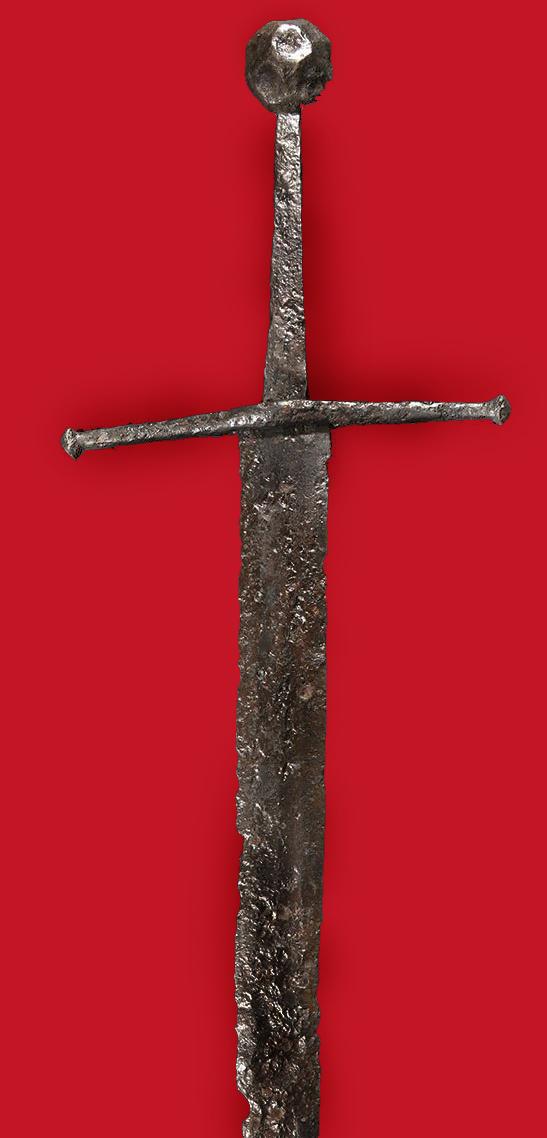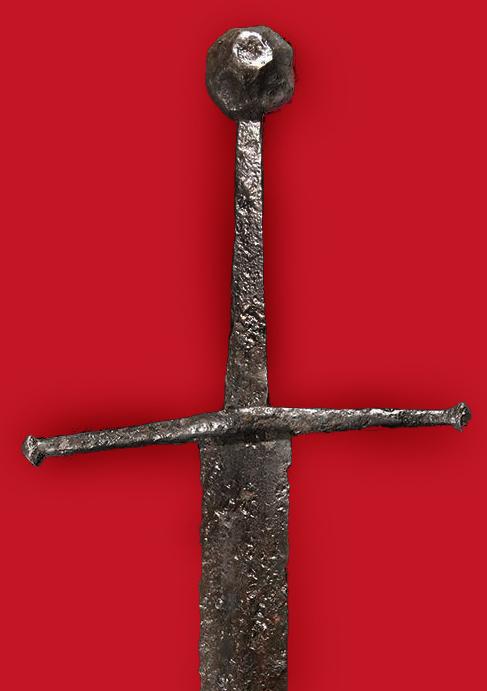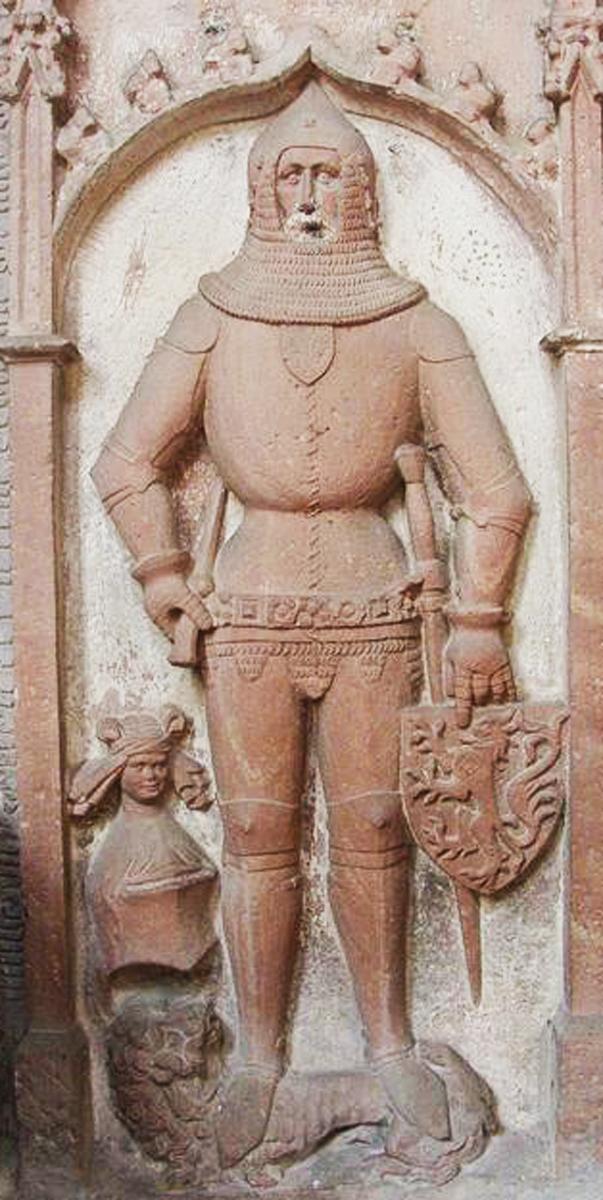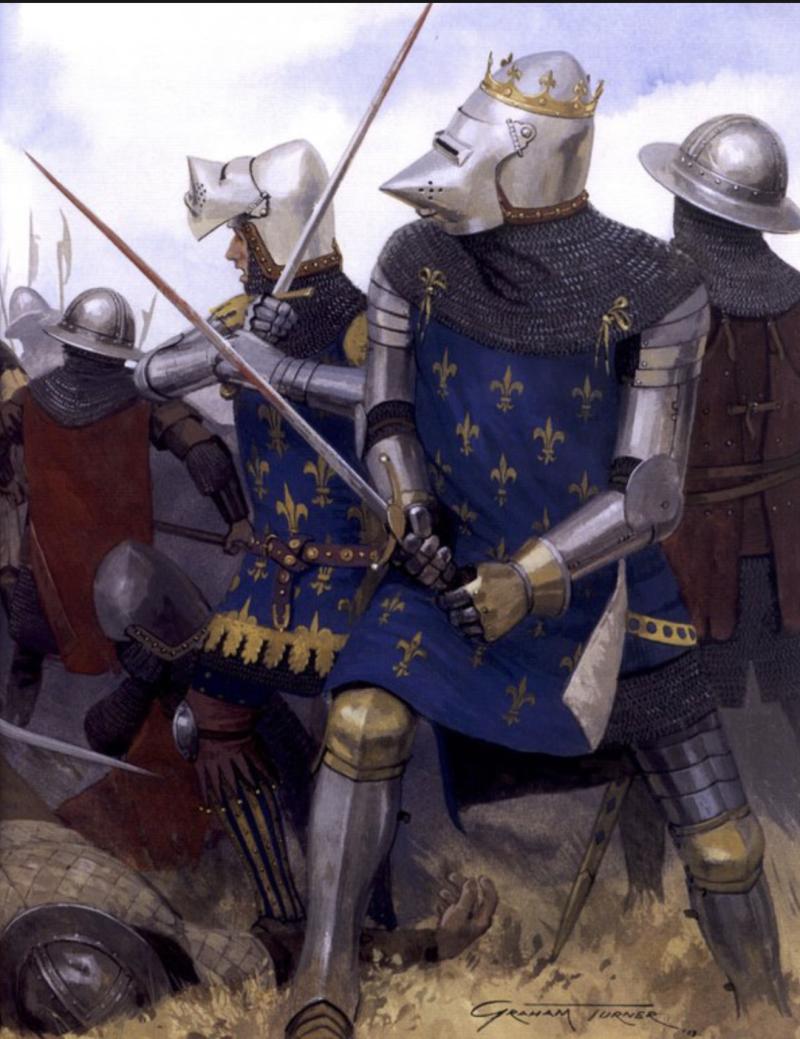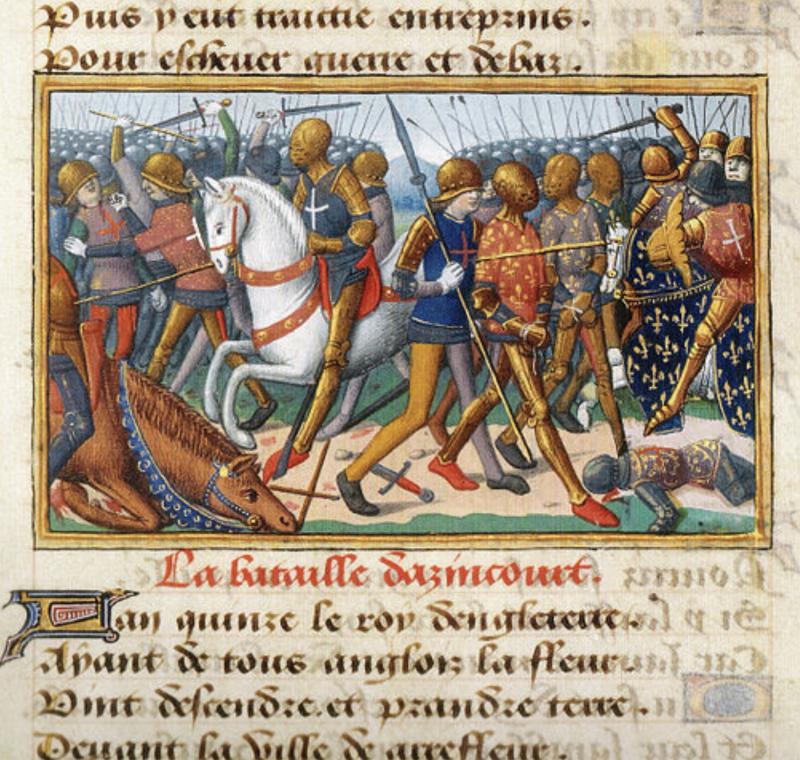A Battle of Agincourt, Henry Vth, Knightly Hand and a Half Sword, Also Known as a Bastard Sword, due to It Being A Transition Sword From A Single Handed To A Two Handed Sword
A most rare sword, from the 100 Years War period, used at the Battles of Crecy and Agincourt by armoured knights. A form of sword designated in the seminal work by Ewart Oakshott known within the Oakshott categorisation as the type XVIII
Overall in good condition for age with usual russetted surface for ancient swords of this era. Fine double edged graduating straight blade with central fullers, a sharp tip, and a multifaceted iron pommel to the elongated grip {as usual, no grip wood survives} long straight crossguard with slight downturn and button quillon ends. Original ancient iron swords, if they still have a crossguard, never have the original wooden grips, the wood never survives the hundreds of years passing which means, the crossguard becomes mobile and no longer in a fixed position.
During the Middle Ages, most swords were relatively light. By the 15th century, however, larger and heavier swords had been developed to increase their ability to penetrate plate armour. That need created the 'Bastard' or 'Hand-and-a-half' sword. They were hybrid swords that enabled blows to be delivered with the power of a two-handed sword but could also be wielded with just one hand.
Medieval swords of this era typically had a cruciform hilt, alluding to the knightly principles of chivalry and the 'Soldiers of Christ'. The pommel, at the top of the sword hilt, was of various shapes and could be made from a variety of materials. Richer swords of princes even had pommels made of rock crystal and chalcedony, and some were left hollow so that they could contain a holy relic.
Many swords were made in continental European centres such as Lorraine,
The Bastard Sword (with a longer grip) could be used for thrusting or cutting and had fearsome capabilities on the battlefield.
It was used as close-combat weapon and was capable of striking a massive blow. Its thrusts were deadlier, which improved their effectiveness when attacking plate armour. The blades of such swords could also be acutely pointed, which helped them to find the gaps in plate armour.
The blade could be the same length as a single-hand sword but the tang and the grip were long enough to accommodate two hands, which provided better leverage and more power.
Swords were worn in scabbards slung from waist belts, many of which were highly decorated with plaques and heraldic designs.
After several decades of relative peace, the English had renewed their war effort in 1415 amid the failure of negotiations with the French. In the ensuing campaign, many soldiers perished due to disease and the English numbers dwindled, but as they tried to withdraw to English-held Calais they found their path blocked by a considerably larger French army. Despite the disadvantage, the following battle ended in an overwhelming tactical victory for the English.
King Henry V of England led his troops into battle and participated in hand-to-hand fighting. The French king of the time, Charles VI, did not command the French army himself, as he suffered from severe psychotic illnesses with moderate mental incapacitation. Instead, the French were commanded by Constable Charles d'Albret and various prominent French noblemen of the Armagnac party.
This battle is notable for the use of the English longbow in very large numbers, with the English and Welsh archers forming up to 80 percent of Henry's army. The decimation of the French cavalry at their hands is regarded as an indicator of the decline of cavalry and the beginning of the dominance of ranged weapons on the battlefield.
Agincourt is one of England's most celebrated victories. The battle is the centrepiece of the play Henry V by Shakespeare. Juliet Barker in her book Agincourt: The King, the Campaign, the Battle ( published in 2005) argues the English and Welsh were outnumbered "at least four to one and possibly as much as six to one". She suggests figures of about 6,000 for the English and 36,000 for the French, based on the Gesta Henrici's figures of 5,000 archers and 900 men-at-arms for the English, and Jean de Wavrin's statement "that the French were six times more numerous than the English". The 2009 Encyclopædia Britannica uses the figures of about 6,000 for the English and 20,000 to 30,000 for the French. Part of an original medieval collection we have just acquired, of Viking and early British relics of warfare
Another picture is of a Medieval tombstone carving, showing the knight’s very same, hand and a half or bastard sword
To see references on this sword see Oakeshott, J, R.E., The Archaeology of the weapons, London, 1960 (Woodbridge, 1999); Oakeshott, E. 'Records of the Medieval Sword', Woodbridge, 1991
Code: 24917
18500.00 GBP



